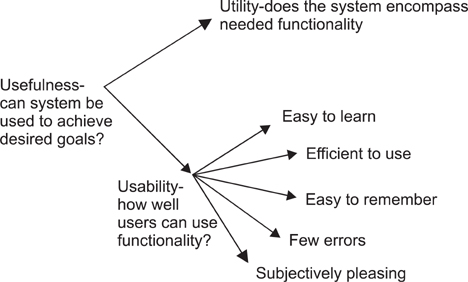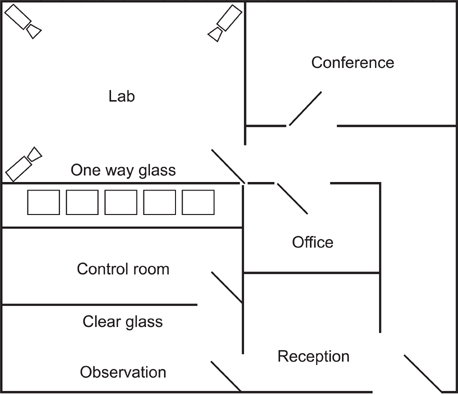Healthc Inform Res.
2012 Dec;18(4):237-241. 10.4258/hir.2012.18.4.237.
Human Factors Engineering in HI: So What? Who Cares? and What's in It for You?
- Affiliations
-
- 1International Health Data Solutions, New York, NY, USA. ontolimatics@gmail.com
- KMID: 2284557
- DOI: http://doi.org/10.4258/hir.2012.18.4.237
Abstract
OBJECTIVES
Human factors engineering is a discipline that deals with computer and human systems and processes and provides a methodology for designing and evaluating systems as they interact with human beings. This review article reviews important current and past efforts in human factors engineering in health informatics in the context of the current trends in health informatics.
METHODS
The methodology of human factors engineering and usability testing in particular were reviewed in this article.
RESULTS
This methodology arises from the field of human factors engineering, which uses principles from cognitive science and applies them to implementations such as a computer-human interface and user-centered design.
CONCLUSIONS
Patient safety and best practice of medicine requires a partnership between patients, clinicians and computer systems that serve to improve the quality and safety of patient care. People approach work and problems with their own knowledge base and set of past experiences and their ability to use systems properly and with low error rates are directly related to the usability as well as the utility of computer systems. Unusable systems have been responsible for medical error and patient harm and have even led to the death of patients and increased mortality rates. Electronic Health Record and Computerized Physician Order Entry systems like any medical device should come with a known safety profile that minimizes medical error and harm. This review article reviews important current and past efforts in human factors engineering in health informatics in the context of the current trends in health informatics.
Keyword
MeSH Terms
Figure
Cited by 1 articles
-
Trends in Health Information Technology Safety: From Technology-Induced Errors to Current Approaches for Ensuring Technology Safety
Elizabeth Borycki
Healthc Inform Res. 2013;19(2):69-78. doi: 10.4258/hir.2013.19.2.69.
Reference
-
1. Koppel R, Metlay JP, Cohen A, Abaluck B, Localio AR, Kimmel SE, et al. Role of computerized physician order entry systems in facilitating medication errors. JAMA. 2005. 293(10):1197–1203.
Article2. Koppel R. Monitoring and evaluating the use of electronic health records. JAMA. 2010. 303(19):1918.
Article3. Nohr C, Sorensen M, Kushniruk A. Method for testing a CPOE system in the medication process in a cardiology ward. Stud Health Technol Inform. 2010. 160(Pt 1):183–187.4. Aarts J, Nohr C. From safe systems to patient safety. Stud Health Technol Inform. 2010. 157:1–3.5. Beuscart-Zephir MC, Elkin P, Pelayo S. Human factors engineering for clinical applications. Stud Health Technol Inform. 2006. 124:685–690.6. Beuscart-Zephir MC, Aarts J, Elkin P. Human factors engineering for healthcare IT clinical applications. Int J Med Inform. 2010. 79(4):223–224.
Article7. Koppel R, Majumdar SR, Soumerai SB. Electronic health records and quality of diabetes care. N Engl J Med. 2011. 365(24):2338–2339.
Article8. Pelayo S, Anceaux F, Rogalski J, Elkin P, Beuscart-Zephir MC. A comparison of the impact of CPOE implementation and organizational determinants on doctor-nurse communications and cooperation. Int J Med Inform. 2012. 09. 20. [Epub]. http://dx.doi.org/10.1016/j.ijmedinf.2012.09.001.
Article9. Beuscart-Zephir MC, Elkin P, Pelayo S, Beuscart R. The human factors engineering approach to biomedical informatics projects: state of the art, results, benefits and challenges. Yearb Med Inform. 2007. 109–127.
Article10. Nielsen J. Usability engineering. 1993. Boston (MA): Academic Press.11. Preece J, Rogers Y, Sharp H, Benyon D, Holland S, Carey T. Human-computer interaction. 1994. Reading (MA): Addison-Wesley Pub Co..12. Hix D, Hartson HR. Developing user interfaces: ensuring usability through product & process. 1993. New York (NY): John Wiley.13. Coble JM, Karat J, Orland MJ, Kahn MG. Iterative usability testing: ensuring a usable clinical workstation. Proc AMIA Annu Fall Symp. 1997. 744–748.14. Kushniruk AW, Patel VL, Cimino JJ. Usability testing in medical informatics: cognitive approaches to evaluation of information systems and user interfaces. Proc AMIA Annu Fall Symp. 1997. 218–222.15. Nielsen J. Estimating the number of subjects needed for a thinking aloud test. Int J Hum Comput Stud. 1994. 41(3):385–397.
Article16. Patel VL, Ramoni MF. Feltovich PJ, Ford KM, Hoffman RR, editors. Cognitive models of directional inference in expert medical reasoning. Expertise in context: human and machine. 1997. Cambridge (MA): MIT Press;67–99.17. Weir C, Lincoln MJ, Green J. Usability testing as evaluation: development of a tool. Proc AMIA Annu Fall Symp. 1996. 870.18. Kushniruk A, Patel V, Cimino JJ, Barrows RA. Cognitive evaluation of the user interface and vocabulary of an outpatient information system. Proc AMIA Annu Fall Symp. 1996. 22–26.19. Elkin PL, Mohr DN, Tuttle MS, Cole WG, Atkin GE, Keck K, et al. Standardized problem list generation, utilizing the Mayo canonical vocabulary embedded within the Unified Medical Language System. Proc AMIA Annu Fall Symp. 1997. 500–504.20. Patel VL, Kushniruk AW. Interface design for health care environments: the role of cognitive science. Proc AMIA Symp. 1998. 29–37.21. Patel VL, Kushniruk AW. Understanding, navigating and communicating knowledge: issues and challenges. Methods Inf Med. 1998. 37(4-5):460–470.
Article22. Talmon J, Ammenwerth E, Brender J, de Keizer N, Nykanen P, Rigby M. STARE-HI: statement on reporting of evaluation studies in health informatics. Int J Med Inform. 2009. 78(1):1–9.
Article23. Context sensitive health informatics: human & sociotechnical approaches [Internet]. c2012. cited at 2012 Nov 16. Geneva, Switzerland: International Medical Informatics Association;Available from: http://www.cshi2013.org.
- Full Text Links
- Actions
-
Cited
- CITED
-
- Close
- Share
- Similar articles
-
- Effects of Hospital Ethical Climate and Communication Self-Efficacy on Nursing Cares Left Undone among Nurses
- Tissue Engineering and Stem Cells
- The Balance Between Safety and Productivity and its Relationship with Human Factors and Safety Awareness and Communication in Aircraft Manufacturing
- Tissue engineering applications in the genitourinary tract system
- The Legality of Medical Cares



